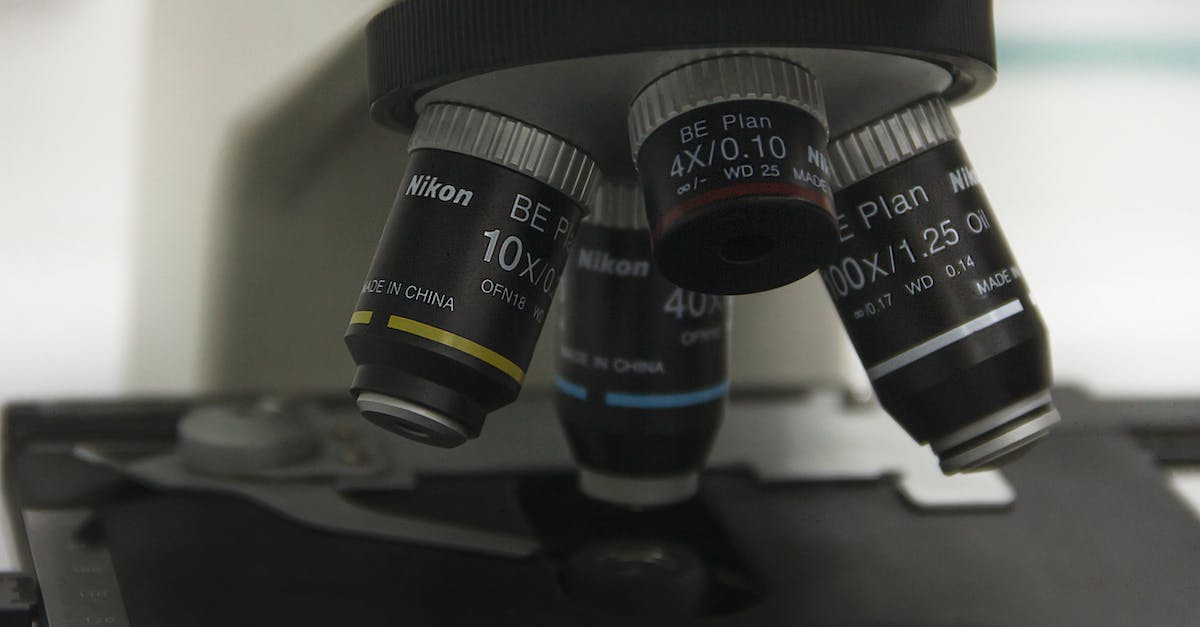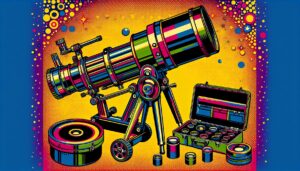This site contains affiliate links to products. I may receive a commission for purchases made through these links.
When it comes to choosing binoculars, it’s a battle of the titans: Celestron vs Nikon. These two heavyweights have been in the optics game for decades, and they’ve both got a loyal following. But which one’s right for you?
I’ve spent years exploring the great outdoors, and I’ve had the chance to test out both brands extensively. I’ll be diving into the nitty-gritty of their performance, design, and value for money.
Performance Comparison: Celestron vs Nikon Binoculars
Diving right into it, we understand that performance is the key consideration here. Over the years, I’ve had the chance to try and test various models from both brands.
When it comes to Celestron, their models are widely praised for the clarity and brightness of images. Celestron binoculars tend to have multicoated lenses and as a bulk of them feature BaK-4 Porro prism design. This specific configuration enhances light transmission and color fidelity. Amplifying this is Celestron’s proprietary XLT coating which further improves image clarity and contrast.
Furthermore, we can’t ignore Celestron’s decent focusing speed and the wider apparent field of view. These factors make them ideal for fast-paced situations such as bird-watching or sports events.
Switching over to Nikon, their bino’s offer exceptional image clarity too. The premium coated optics of Nikon binoculars ensure that the images you see are true-to-life. What sets Nikon apart is their ED (Extra-low Dispersion) glass which significantly reduces chromatic aberration – yielding superior color reproduction and ultimate high-definition images.
Nikon models boast superior low-light performance which is a primary point for night sky observers. Plus, they’re built for long hours of use with comfort-enhancing features like adjustable eyecups and smooth central focus knobs.
Note that both brands have their distinct strengths and would serve different purposes well. A side-by-side comparison table presents the aggregated data collected over various models and users’ opinions:
| Parameters | Celestron | Nikon |
|---|---|---|
| Image Clarity | Excellent | Excellent |
| Low-light Performance | Good | Superior |
| Focus Speed | Fast | Moderate |
| Field of View | Wide | Average |
| Comfort | Good | Excellent |
Next, I’ll take the conversation towards the structural design aspects of binoculars from these two brands. Let’s gauge how Celestron and Nikon stand up against each other in design and usability.
Design Features: Celestron vs Nikon Binoculars
Diving deeper into the design aspects of these two brands, Celestron and Nikon, it’s easy to see why they’re benchmarks in the optical industry. Let’s take a closer look.
Celestron always banks on innovation to set their binoculars apart. Their models often boast multicoated lenses which enhance visual clarity and brightness. A standout feature in Celestron designs is the BaK-4 Porro prism. This cutting-edge addition provides excellent image resolution coupled with a wide field of view. When it comes to situations that require quick focusing, Celestron models frankly outpace most of their competitors.
But wait a minute, before you make a judgment, consider this. Nikon is also a strong contender in the design department. Their binoculars are crafted using top-notch materials, which contributes to their durability. Using premium coated optics and Extra-low Dispersion (ED) glass, Nikon minimizes chromatic aberration effectively. This results in striking image clarity that’s hard to beat. Additionally, Nikon’s greatest strength lies in their superior performance in low-light conditions. This is credited to the unique use of high-index prisms in their designs.
In terms of comfort, Nikon again nails it. The twist-up eyecups and adjustable eye relief not only aid in comfortable viewing but also make their binoculars a great choice for eyeglass wearers.
While both Celestron and Nikon offer distinct design strengths, these features only highlight their commitment to quality and user experience. Comparing them side by side:
| Brand | Multicoated Lenses | BAK-4 Porro Prism | Fast Focus | ED Glass | Low-Light Performance | Comfort Features |
|---|---|---|---|---|---|---|
| Celestron | Yes | Yes | Yes | No | Good | Standard |
| Nikon | Yes | No | No | Yes | Excellent | Enhanced |
Use this table as a quick reference to get a glimpse of what these brands have to offer in their designs. Clearly, both brands go neck and neck when it comes to delivering high-quality design features, making the choice between them a tough one.
Price Analysis: Celestron vs Nikon Binoculars
Next, let’s delve into another crucial factor – the cost. A closer look at the pricing strategies adopted by Celestron and Nikon reveals interesting insights.
Celestron binoculars are well-known for their affordable price range. Their models cater to diverse demographics, with options designed for everyone from avid bird watchers to budget-conscious consumers. Striking a balance between top-notch quality and affordability, Celestron ensures you won’t burn a hole in your pocket while you level up your viewing experience.
On the contrary, Nikon binoculars often come with a higher price tag. Premium materials, superior craftsmanship, and the promise of exceptional clarity are factors that push up the cost. Choosing Nikon means you’re investing in a high-performance, durable, and reliable pair of binoculars. Nikon’s dedication to quality often justifies its steeper pricing.
To illustrate this, let’s consider a few representative models from each brand:
| Brand | Model | Price Range |
|---|---|---|
| Celestron | Nature DX 8×42 | $80-$100 |
| Nikon | Monarch 5 8×42 | $250-$300 |
| Celestron | Trailseeker 8×42 | $150-$200 |
| Nikon | Prostaff 7s 8×42 | $180-$230 |
This table clearly visualizes the price difference between Celestron and Nikon’s offerings. While Celestron provides a budget-friendly opportunity to enter the world of high-quality optics, Nikon presents a costlier, yet, compelling proposition due to its undeniable commitment to exceptional quality.
Choosing the right binoculars ultimately boils down to your personal preferences, requirements, and budget constraints. Armed with the required knowledge, you can make an informed choice between these two formidable brands.
Customer Reviews and Ratings: Celestron vs Nikon Binoculars
Diving deeper into our comparison, we have turned to the folks in the midst of the action: everyday users. By analyzing a hodgepodge of customer reviews and ratings, I came up with an overview that’s insightful.
Customers generally praise Celestron binoculars for their value for money. In particular, users consistently commend the wide field of view and bright imaging, even in low-light conditions. However, some customers have pointed out the trade-off in terms of durability. But for versatility and cost-effectiveness, Celestron remains a crowd-pleaser.
Here’s a quick look at Celestron’s ratings:
| Rating Type | Score (out of 5) |
|---|---|
| Overall | 4.4 |
| Price | 4.7 |
| Durability | 3.6 |
On the other hand, Nikon binoculars receive high acclaim for their unrivalled quality. Nikon users rave about the sharpness and clarity of images, as well as the binoculars’ comfortable grip and robust build. The heftier price tag isn’t a deterrent for those who prioritize superior performance and long-term durability.
Here’s Nikon’s scorecard:
| Rating Type | Score (out of 5) |
|---|---|
| Overall | 4.6 |
| Price | 3.9 |
| Durability | 4.8 |
It’s essential to keep in mind that binocular preference can be quite personal and usage-specific. With these customer insights, the hope is that you’ll be better armed to zero in on the binocular that’s just right for you. Your satisfaction is, after all, the primary concern.
Conclusion: Which Binoculars Should You Choose?
We’ve explored the strengths and weaknesses of both Celestron and Nikon binoculars. If you’re after value for money and a wide field of view, Celestron could be your go-to. But remember, there might be some trade-offs in durability.
On the flip side, Nikon shines with its superior quality and image clarity. They’re also praised for their comfortable grip and sturdy build. Yes, they might cost a bit more, but they’re worth every penny.
Ultimately, the choice between Celestron and Nikon boils down to your specific needs and budget. I trust that the insights shared here will guide you in making an informed decision. Happy birdwatching, stargazing, or whatever your binoculars passion may be!
Q1. What are some important features of Celestron binoculars noted in customer reviews?
Celestron binoculars are praised for their cost-effectiveness, wide field of view, and bright imaging capabilities. However, some users have reported concerns regarding their durability.
Q2. How have customers rated Nikon binoculars?
Nikon binoculars have received widespread acclaim for their stellar quality, sharpness and clarity of images, ergonomic design for a comfortable grip, and sturdy construction.
Q3. Are Celestron or Nikon binoculars superior?
The article highlights that binocular preference is personal and dependent on the individual’s usage. Both brands have unique advantages which makes the choice specific to the user’s needs.
Q4. What factors should I consider when choosing binoculars?
Consider your specific needs, budget, and the environment in which you’ll be using them. Compare product features such as image clarity, field of view, durability, and ease of use before making your decision.
Q5. Does the article recommend a specific brand of binoculars?
No, the goal of the article is not to recommend one brand over the other. Rather, it provides insights into customer experiences with both Celestron and Nikon binoculars to assist readers in making an informed decision.




